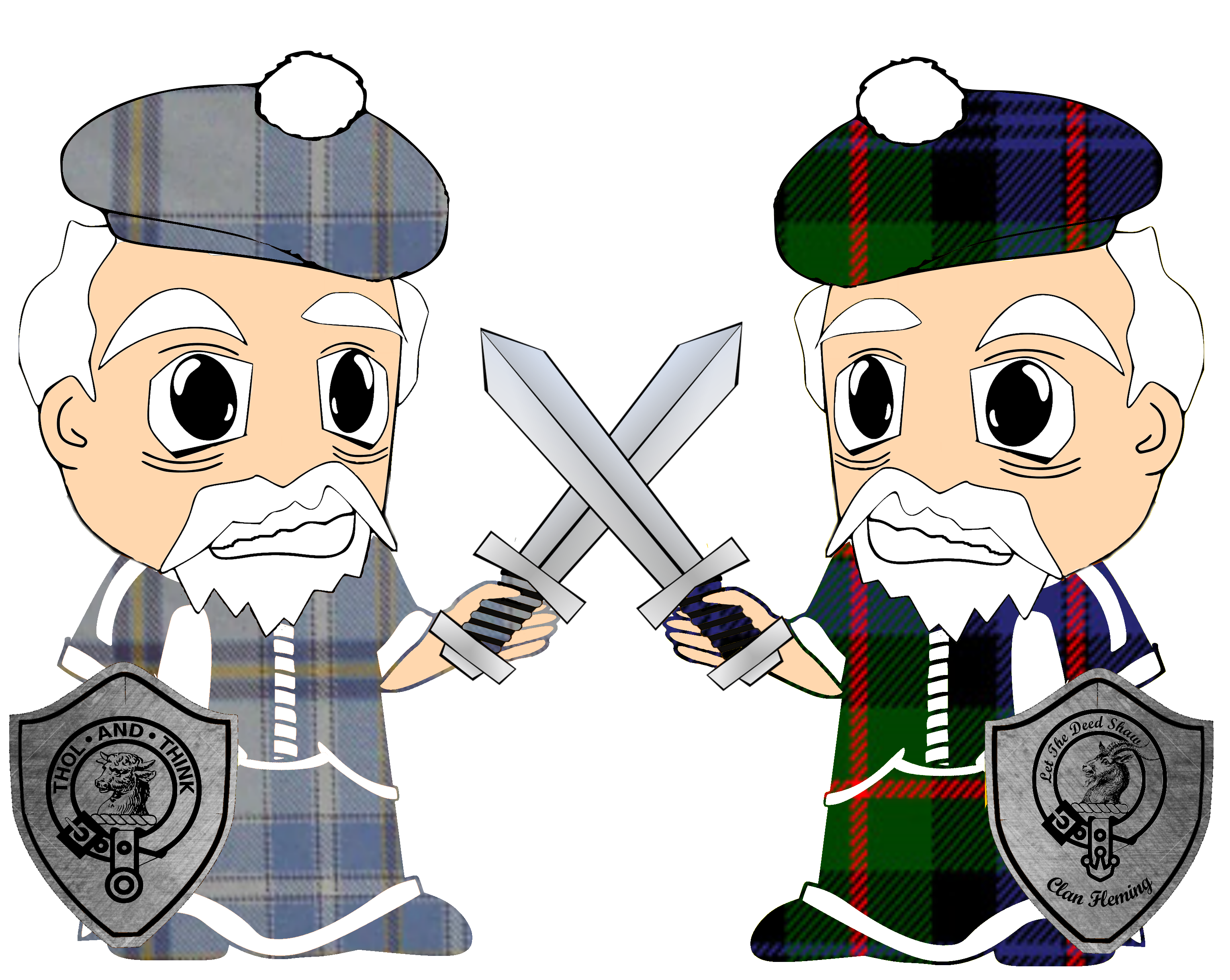Tweedie vs. Fleming
 The feud between the Flemings of Biggar and the Tweedies of Drummelzier began over the proposed marriage of Catherine Fraser. Catherine was the heiress of Sir Simon Fraser, head of an old family that held large estates in the Upper part of Tweeddale. The chief of Clan Fleming was hoping to gain control of these estates by getting Catherine to marry one of his illegitimate sons. The Tweedies were intent on Catherine Fraser marrying James Tweedie who at the time was the nephew of the Tweedie chief giving the Tweedies control of these estates.
The feud between the Flemings of Biggar and the Tweedies of Drummelzier began over the proposed marriage of Catherine Fraser. Catherine was the heiress of Sir Simon Fraser, head of an old family that held large estates in the Upper part of Tweeddale. The chief of Clan Fleming was hoping to gain control of these estates by getting Catherine to marry one of his illegitimate sons. The Tweedies were intent on Catherine Fraser marrying James Tweedie who at the time was the nephew of the Tweedie chief giving the Tweedies control of these estates.
During the height of the anamostiy between these two clans, the Tweedies learned that Lord Fleming and his heir Malcolm intended to go hawking on his property near the Tweedie’s stronghold of Drummelzier. The Tweedies assembled forty to fifty of their clansmen and surprised the small group of Flemings during their hunting trip. An altercation ensued between the two groups and a member of the Tweedie Clan, Thomas Tweedie, slew Lord Fleming. The Tweedie’s then gathered up Lord Flemings heir, Malcolm, and took him back to Drummelzier where he was kept in confinement. The Tweedies sent word to the Flemings that Malcolm would remain a prisoner until they made a pledge that Catherine Fraser and the deeds to her land would be delivered to them. Malcolm’s uncle and several of his men then surrendered themselves to the Tweedies in order to ensure Malcolm’s safety and as an assurance to the Tweedies that Catherine Fraser would be delivered to them. Catherine Fraser, with the help of the Flemings, completed documents, dated November 17th, 1524, that stated that she was going to go to Drummelzier, against her inclination in order to obtain the release of her friends from the Tweedies but anything she may say or do during her time with the Tweedies should not be legally used to control her or her estates. The Fleming’s then brought these papers to the civil authorities who then declared the Tweedie’s criminals and began to apprehend members of their clan. In an attempt to take the heat off, the Tweedies reached out to the Flemings and requested a meeting to try to make amends for the death of Lord Fleming. James Tweedie and his men met with the Flemings at the market cross of Peebles and offered their swords to the them, they also declared themselves their servants and agreed to support and defend the Flemings against others. Tweedie and his men also agreed to make three pilgrimages in Scotland where they would call mass to be said for the welfare of Lord Fleming’s soul. The agreement was cemented by the promise of marriage of James Tweedie to one of Lord Flemings sisters.
It appears that the Tweedies were unable or refused to meet all the demands levied out by the Flemings and in 1525 the Crown declared that they deserved retribution. The Tweedie lands of Easter Drummelzier, Tinnes and Hopcalzie along with the Wester Drummelzier would be granted to the Flemings, but were redeemable, by the Tweedies within seven years on the payment of a fixed sum. According to historical documents the Tweedie’s were unable to reinstate the ownership of their properties and over the next several years the fortunes of the Tweedies of Drummelzier declined. They finally sold the last of their property to Lord Hay of Yester in 1633.